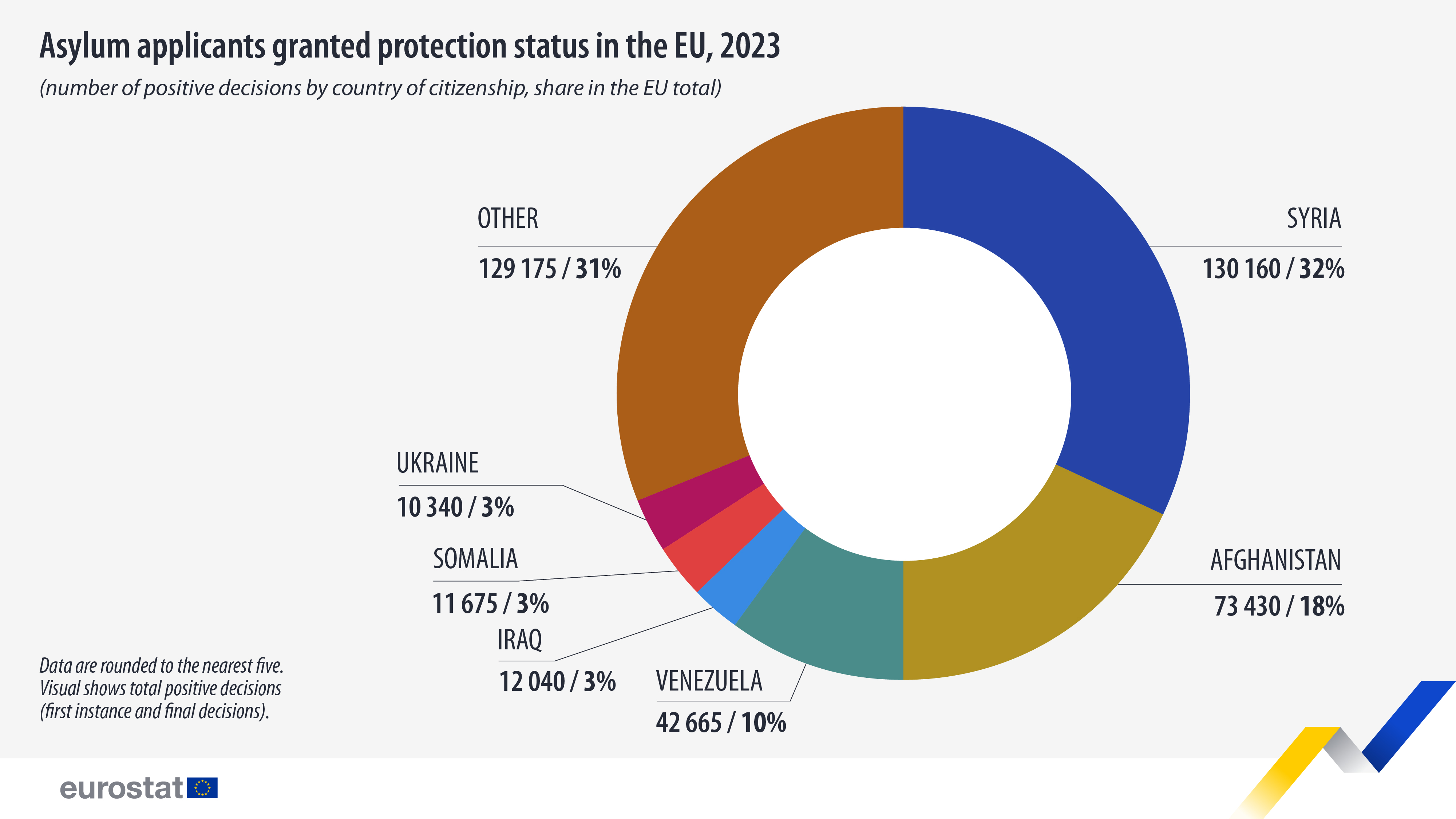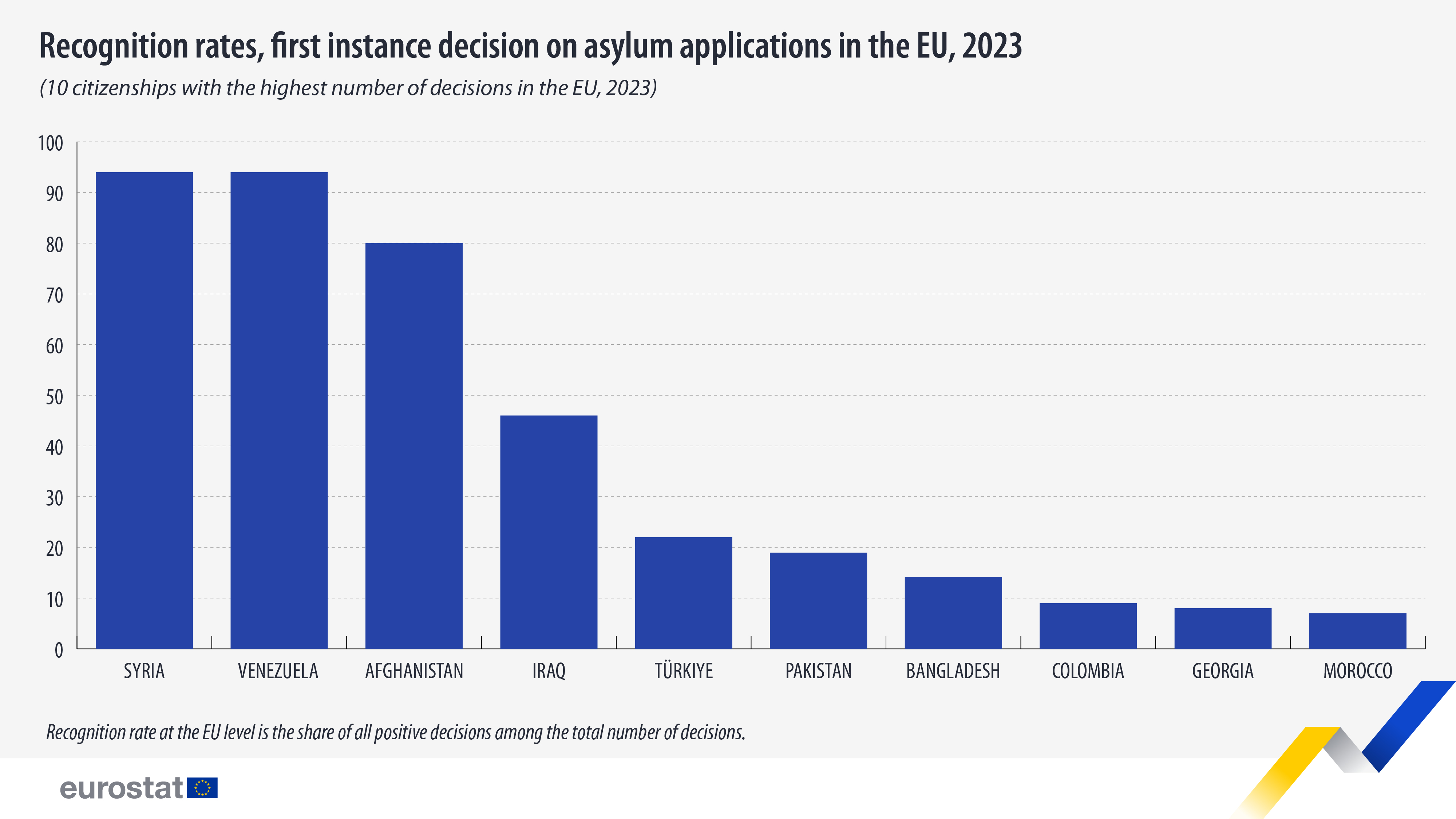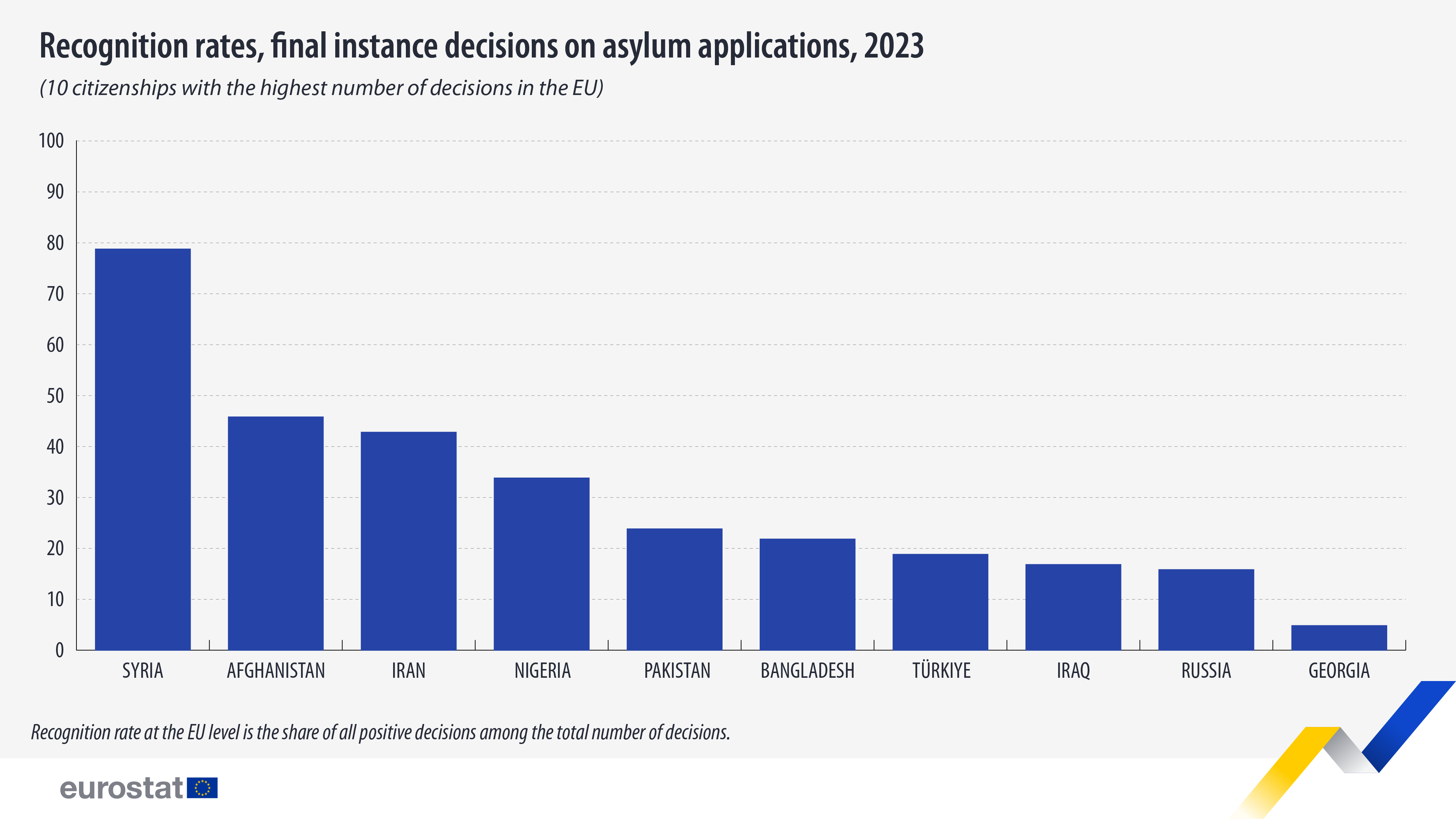Asylum decisions up by 7% in 2023

In 2023, EU countries provided protection status to 409 485 asylum seekers, a 7% increase compared with 2022 (383 700).
This information comes from data on asylum decisions published by Eurostat today. The article presents a selection of findings from the more detailed Statistics Explained article.
Among the 409 485 asylum seekers who were granted protection status in 2023 in the EU, 43% received refugee status, 35% were given subsidiary protection, and 22% received humanitarian status. Compared with 2022, the number of refugee status granted increased by 3% and subsidiary protection rose by 20%, while humanitarian status decreased by 3%.
The highest number of people who received protection status was reported by Germany (151 505, 37% of the EU total), ahead of France (55 220, 13%) and Spain (52 950, 13%). Together, these 3 countries granted 63% of all protection status at the EU level.
Syrians, Afghans and Venezuelans: main beneficiaries of protection status
In 2023, most beneficiaries of protection status in the EU were Syrians (32% of the total number of people granted protection status in the EU). They were followed by Afghans (18%) and Venezuelans (10%).
Source datasets: migr_asydcfsta and migr_asydcfina
53% first instance decisions resulted in protection status
In 2023, 674 125 first instance decisions on asylum applications were made in the EU, and a further 191 530 final decisions following an appeal or review. Decisions made at the first instance resulted in 358 235 grants of protection status, while another 51 250 people received protection status after an appeal or review.
The recognition rate at the EU level, i.e. the share of all positive decisions among the total number of decisions, was 53% for first instance decisions. For final decisions on appeal or review, the recognition rate was 27%. These rates include both international (i.e. refugee status and subsidiary protection) and national protection status (humanitarian status based on national legislation).
Among the top 10 citizenships that received first instance decisions in 2023, Syrians and Venezuelans (both 94%) and Afghans (80%) had the highest recognition rates.
Source dataset: migr_asydcfsta
For final instance decisions following an appeal or review in 2023, Syrians (79%), Afghans (46%) and Iranians (43%) had the highest recognition rates.
Source dataset: migr_asydcfina
For more information
- Statistics Explained article on asylum decisions - annual data
- Thematic section on migration and asylum
- Database on asylum
Methodological note
Application for international protection means an application for international protection as defined in Art. 2(h) of Council Directive 2011/95/EU, i.e. including requests for refugee status or for subsidiary protection status, irrespective of whether the application was lodged on arrival at the border, or from inside the country, and irrespective of whether the person entered the territory legally (e.g. as a tourist) or illegally.
If you have any queries, please visit our contact us page.



